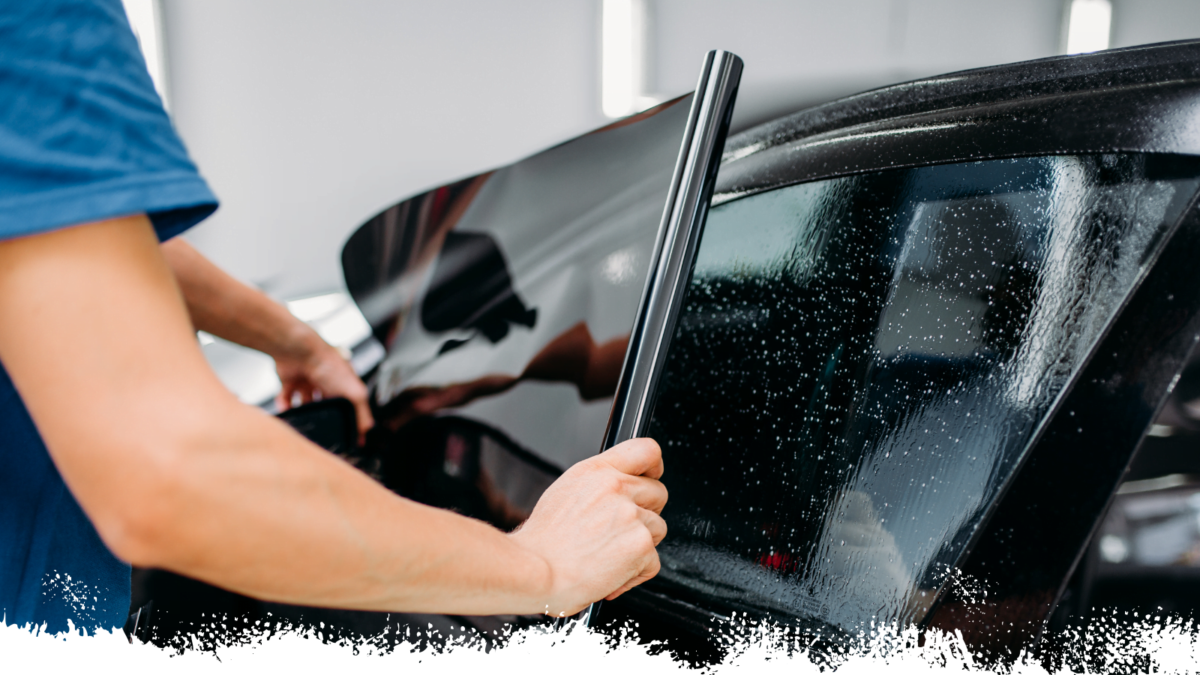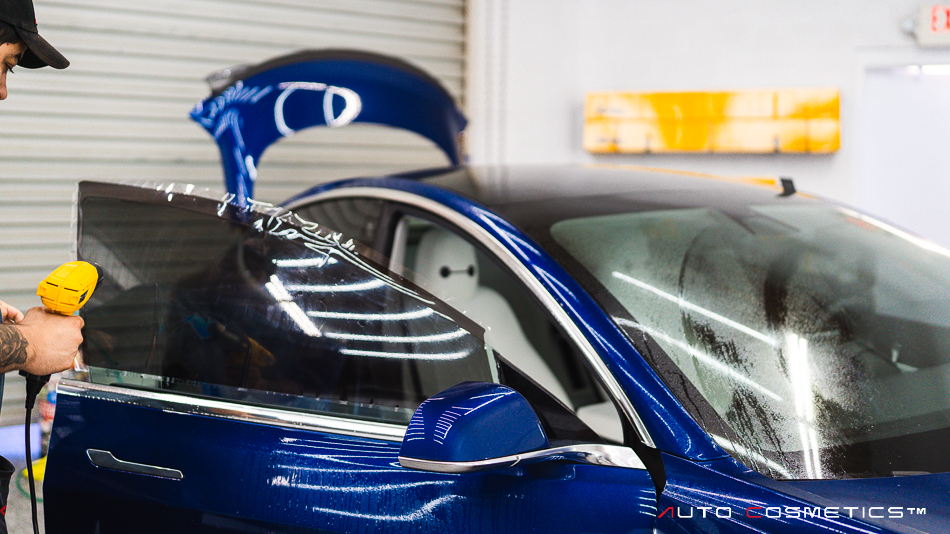Economical Window Tinting Clovis: Minimize Power Expenses and Enhance Aesthetics
Economical Window Tinting Clovis: Minimize Power Expenses and Enhance Aesthetics
Blog Article
Discovering the Different Kinds of Window Tinting: A Comprehensive Summary for Automobile Owners
In the world of vehicle improvements, home window tinting stands out as a practical option for vehicle proprietors intending to enhance convenience and looks while supplying important security (window tinting clovis). Recognizing the lawful laws governing tinting in various jurisdictions includes an additional layer of complexity to the decision-making process.
Advantages of Home Window Tinting
Window tinting uses a myriad of advantages that enhance both the aesthetic charm and functionality of cars. Among the main advantages is the reduction of damaging ultraviolet (UV) rays, which can cause skin damage and boost the danger of skin cancer. By obstructing up to 99% of UV radiation, colored windows offer vital security for passengers during day-to-day commutes or lengthy journeys.
Additionally, window tinting considerably enhances indoor convenience by decreasing glow and warmth accumulation. This not just produces a much more pleasant driving experience however also minimizes the reliance on cooling, causing sustain financial savings. Enhanced personal privacy is another important benefit; tinted home windows obscure the sight right into the lorry, guarding personal possessions and making sure a sense of security for owners.
Furthermore, home window tinting can prolong the life-span of an automobile's inside by minimizing sunlight damage, such as fading and cracking of furniture. Ultimately, many jurisdictions recognize the visual worth of tinted windows, which can boost a vehicle's total look and resale value. In summary, the diverse advantages of home window tinting make it a valuable financial investment for automobile owners seeking to improve convenience, safety, and design.
Kinds Of Home Window Tint Movies
A variety of window color films are readily available on the market, each created to satisfy different requirements and preferences. The most common kinds include dyed, metalized, ceramic, and hybrid films.
Colored films are preferred for their aesthetic allure, as they give a darker color without mirroring light. Metalized films, on the other hand, consist of metal particles that mirror warmth and UV rays, improving durability and performance.
Ceramic films represent a premium option, providing premium warm rejection and UV protection without the drawbacks of reflectivity. These films are non-conductive and do not impact digital tools, making them a popular option amongst car owners seeking high efficiency. Hybrid films integrate the benefits of colored and metalized films, providing an equilibrium between expense and performance.
Picking the right film relies on specific top priorities such as heat rejection, visual appeals, and budget. Recognizing the features of each type can guide vehicle owners in making informed decisions that line up with their particular demands and choices.

Legal Laws on Tints
Lawful laws on home window tinting differ substantially across different regions, mirroring neighborhood laws and security requirements intended at making sure driver exposure and safety and security. In the United States, for example, each state has its own collection of guidelines controling the permitted levels of color darkness, usually determined by Visible Light Transmission (VLT) percentages. While some states allow darker tints for back home windows, others enforce stricter restrictions on front side home windows and windshields.
Internationally, laws can differ also much more drastically (window tinting clovis). Countries may enforce full restrictions on tinting Our site or restrict it to lighter tones. In the European Union, the front windscreen must permit at the very least 75% of light to pass through, while the front side windows have to permit at least 70%.
Compliance with these regulations is crucial, as failing to stick can cause fines, required removal of non-compliant colors, and even automobile inspections. Car owners ought to acquaint themselves with their local laws prior to applying window tinting. Consulting with specialists and examining state or national guidelines can aid guarantee that any type of selected tint complies with legal requirements, ultimately enhancing both safety and appearances.
Setup Process and Factors To Consider
When considering the installment of window tinting for automobiles, a number of key elements should be taken into consideration to make certain an effective end result. First and leading, choosing the ideal type of color is critical, as numerous products use different degrees of warmth being rejected, UV security, and visual appeal. Furthermore, it is very important to check local regulations concerning tint darkness and reflectivity to continue to be certified with the legislation.
The setup procedure itself can be carried out do it yourself or by an expert. While DIY sets are available, professional installment is often advised for optimum results. Experts have the necessary skills, tools, and experience to guarantee a perfect application, which decreases the danger of bubbles, folds, or peeling.
Prior to setup, the lorry's windows must be thoroughly cleaned up and dried out to protect against contaminants from interfering with the adhesive. By taking into consideration these factors, vehicle owners can improve their driving experience while guaranteeing read this the long life and performance of their window color.
Upkeep and Care Tips
Correct maintenance and care are crucial for preserving the look and capability of home window tinting after installation. To make certain durability, vehicle owners ought to wait at the very least 2 days prior to rolling down their windows, permitting the adhesive to treat properly. Routine cleaning is necessary; nonetheless, it is essential to use gentle, ammonia-free solutions and soft microfiber cloths to avoid scraping the tint.
When cleaning your vehicle, prevent high-pressure water sprays straight on the tinted windows, as this can compromise the adhesive gradually. Rather, make use of a damp cloth to wipe the surface gently. Additionally, avoid making use of unpleasant products, such as rough sponges or brushes, which can damage the tint.
Check your home window tint periodically for signs of gurgling, peeling, or staining. Speak with an expert to identify whether substitutes or repair services are necessary if any problems are spotted. Car parking in shaded locations or using sunshades can additionally safeguard your tint from prolonged sun direct exposure, which can lead to fading.
Verdict
In summary, comprehending the various types of home window tinting is crucial for vehicle proprietors aiming to enhance convenience, looks, and security. Correct setup and maintenance additionally ensure optimum performance that site and durability of the color.
In summary, the complex benefits of home window tinting make it an important financial investment for car proprietors seeking to boost security, design, and comfort.
Legal regulations on window tinting differ considerably throughout various regions, reflecting regional laws and security standards aimed at guaranteeing vehicle driver exposure and security. While some states permit darker colors for rear home windows, others enforce more stringent restrictions on front side windows and windshields.

Report this page